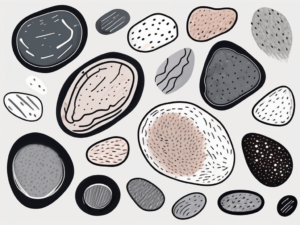 Dermal lesions are abnormal growths or changes in the skin that can vary widely in appearance, severity, and cause. While some skin lesions are harmless, others may signal more serious health issues, making it essential to understand their symptoms, causes, and treatment options.
Dermal lesions are abnormal growths or changes in the skin that can vary widely in appearance, severity, and cause. While some skin lesions are harmless, others may signal more serious health issues, making it essential to understand their symptoms, causes, and treatment options.
What Are Skin Lesions?
A skin lesion is an area of the skin that appears different from the surrounding tissue, often because of a disease, infection, or injury. Lesions can manifest as lumps, sores, or discolorations and can be either benign or malignant.
Types of Skin Lesions
There are two main categories of skin lesions:
- Primary lesions: These are abnormal skin changes that are present at birth or develop later due to an illness or environmental factors. Examples include moles, warts, and blisters.
- Secondary lesions: These result from the progression of primary lesions or external factors such as infection, scratching, or healing processes. Examples include ulcers, crusts, and scars.
What Is a Malignant Skin Lesion?
A malignant skin lesion refers to a cancerous growth that poses serious health risks. These include melanomas, squamous cell carcinomas, and basal cell carcinomas. Malignant lesions often change in size, shape, or color and may bleed, itch, or ulcerate.
What Is a Benign Skin Lesion?
A benign skin lesion is non-cancerous and typically not life-threatening. Common examples include moles, skin tags, and seborrheic keratosis. While benign lesions generally don’t require treatment, some people may choose to remove them for cosmetic reasons or if they cause discomfort.
What Causes Skin Lesions?
Skin lesions can result from a variety of factors, including:
- Infections: Bacterial, viral, or fungal infections can lead to skin lesions.
- Allergies: Skin reactions to allergens like chemicals, plants, or fabrics.
- Chronic conditions: Diseases such as eczema, psoriasis, or lupus.
- Injuries: Cuts, burns, or other traumas to the skin.
- Cancer: Malignant skin lesions result from abnormal cell growth.
How Do You Diagnose Skin Lesions?
Diagnosing a skin lesion typically involves a physical examination by a healthcare provider. In some cases, a biopsy (removing a small sample of the lesion for testing) may be required to determine if the lesion is malignant or benign. Additional tests may be necessary to identify the underlying cause.
How Do You Treat Skin Lesions?
Treatment for skin lesions depends on the type, cause, and severity. Common treatment options include:
- Medications: Topical creams or oral medications to treat infections or inflammation.
- Cryotherapy: Freezing off benign lesions using liquid nitrogen.
- Laser therapy: Using focused light to remove or reduce lesions.
- Surgical excision: Removing the lesion surgically, often used for malignant lesions.
Contact DFW Wound Care Center
At DFW Wound Care Center, we specialize in diagnosing and treating a variety of skin lesions and other common wounds. With advanced wound care techniques, we provide personalized care at four convenient locations: Plano, Lewisville, Irving, and DeSoto. Our expert team is ready to address your unique needs. We have immediate openings and are accepting new patients—use our online contact form to get in touch today!
Contact us
Schedule an appointment
with our specialists by contacting us or calling our:
